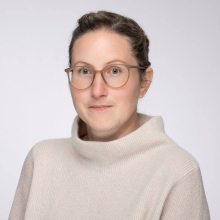Judith Mandl
Associate Member, Department of Microbiology and Immunology
Associate Professor, Department of Physiology

ACCEPTING GRADUATE STUDENTS AND POST-DOCTORAL FELLOWS.
Please email your CV, letter of interest, and transcript. I will consider outstanding applications.
Bachelor of Science (Hons), University of Warwick, Coventry, United Kingdom. 1999 - 2002.
Field: Computational Biology
PhD, Emory University, Atlanta, United States. 2002 - 2008. Field: Population Biology, Ecology, and Evolution; Immunology.
Supervisor: Mark B. Feinberg, M.D., Ph.D.
Postdoctorate, NIAID, National Institutes of Health, Bethesda, United States. 2008 – 2014.
Field: Immunology, Systems Biology; Supervisor: Ronald N. Germain, M.D., Ph.D.
Tier 2, Canada Research Chair in Immune Cell Dynamics (2021 - 2025)
T cells are a major effector arm of the adaptive immune system. We study two fascinating properties of T cells: they are highly motile cells able to migrate all around the body, and each T cell is subtly different. Both the continuous motion and the diversity of a T cell population are critical to mounting effective T cell responses. We investigate how T cells move through complex tissue, through what mechanisms T cell collectives avoid crowding issues, and how the interactions made during migration impact T cell heterogeneity. We take a systems approach to study T cell immunity at the organism level (responses to infection, homeostasis), at the tissue level (T cell trafficking, localization, adaptation to distinct tissue environments), at the cell level (migration, navigation strategies through tissue-imposed obstacles), and at the within cell level (cytoskeletal processes, gene expression and T cell receptor sequences), illustrated in Figure.
